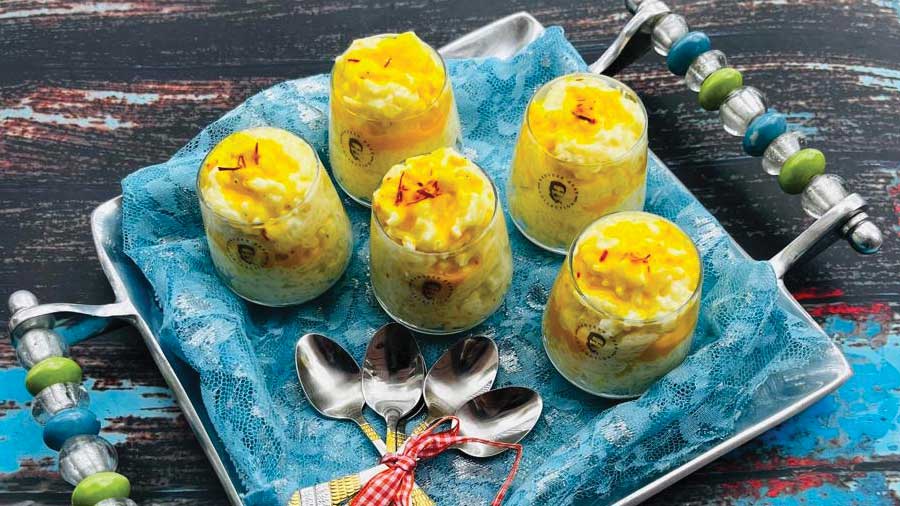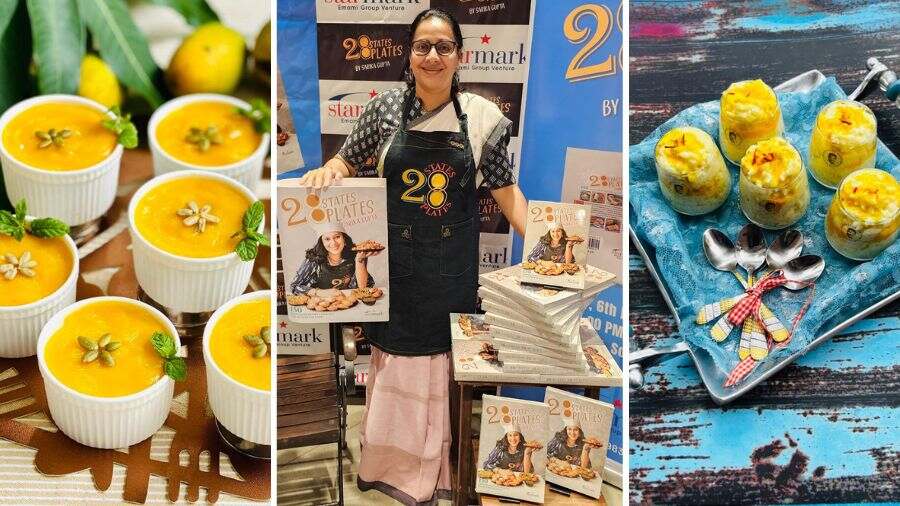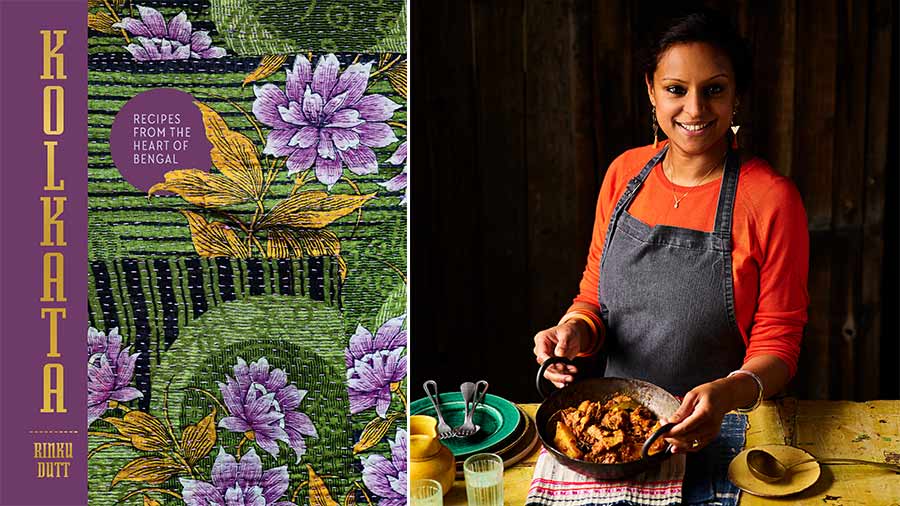Author Sarika Gupta, having lived in different cities across India, has a deep appreciation for the country’s cultural diversity and culinary traditions. A passionate food enthusiast and travel aficionado, she has meticulously compiled her debut cookbook with all the vegetarian recipes she had gathered during her stay in various cities.
The book, published by Starmark, consists of 150 vegetarian Indian recipes from 28 states like West Bengal, Rajasthan, Uttar Pradesh and more. Many of these recipes are traditional, uncommon dishes. Speaking about the cookbook during the launch at Starmark in South City Mall, Sarika Gupta said, “Readers can explore known, unknown, and lesser-known vegetarian recipes from all 28 states and some Union Territories of India, including those rarely found in popular cookbooks. One can delve into the rich history and cultural significance of each dish with anecdotes and stories that bring the recipes to life. Whether you are a seasoned cook or a beginner, the detailed instructions and the illustrated photographs will make the cooking process easy and enjoyable.”
This festive season, My Kolkata picks two dessert recipes from the book from West Bengal and the author’s place of origin, Rajasthan.
Bhapa Aamer Doi
Bhapa Doi, sweet baked yoghurt, is one of the signature dishes of West Bengal. This recipe is a modern take on the traditional dessert and uses cheesecake baking techniques.

Ingredients
Base Layer
- Mango puree: 2 cups
- Hung curd: 1½ cups
- Condensed milk: 300 grams (3/4 can)
- Fresh cream: 250 ml
- Agar-agar: 1 tsp
Mango Jelly Layer
- Mango puree: 1 cup
- Agar-agar: 1 tsp
- Sugar: 1 tbsp
- Lime juice from ½ or 1 lemon
Method
- Place a large strainer on a large bowl and line it with a cheesecloth. Put around 1.5 litres of fresh curd (made with full fat milk) in it. Cover and refrigerate overnight
- Refrigerate the fresh cream for two days. Do not freeze. The cream and water will separate. Discard the excess water
- Take 2 kgs of ripe mango pulp. Strain the puree made from the pulp without adding any water. Make and refrigerate the puree on the previous day
- Mix a cupful of mango puree and agar-agar in a small nonstick sauce pan. Rest it for 5 minutes and give it a good stir
- Cook on low flame, stirring continuously. It will thicken rapidly because of the agar-agar. Turn off the heat and mix in the rest (1 cup) of the mango puree. This will cool everything down instantly. Keep stirring to cool further
- Preheat the oven at 180° C for 15 minutes
- Whisk all the 4 main ingredients—hung curd (1½ cups), cream, mango puree (2 cups) and 3/4 can (300 gm) of condensed milk in a large bowl
- Taste and add more condensed milk to adjust to the preferred level of sweetness
- Pour the mixture in ramekins (individual oven-proof bowls). Small stainless steel bowls would work well, too
- Put these bowls in an oven-proof tray and add water to the tray to make a water bath
- Bake them for 20-25 minutes in a preheated oven at 180°C. Check after 20 minutes. Bake for an additional 10 minutes if it feels loose and jiggly
- Cool completely before topping with the mango jelly layer
Option: Mango Jelly Layer
The mango jelly layer is an optional, additional step. It will make the dessert look and taste superlative. The mango puree for the jelly layer should have a pleasant tart taste besides the dominant sweetness. Add a tsp of lime juice if the mango pulp is very sweet.
Method
- Mix sugar, agar agar and half a cup of mango puree in a small non-stick saucepan. Let it sit for 5 minutes for the agar-agar to bloom
- Cook the puree by stirring continuously. It will thicken almost instantly. Remove from heat and whisk in the rest (½ cup) of the puree. This will bring the temperature down immediately
- Pour spoonfuls of this warm mango puree in the bowls, on top of the Bhapa Doi, dividing between the bowls. Work fast as agar agar starts to gel instantly.
- Let it cool completely. Cover the bowls with small lids or cling wrap. Refrigerate and serve chilled
- Keep the rest of the bowls of Bhapa Doi refrigerated. It can be eaten over 3-4 days
Note
- Bhapa Doi can be steamed (as done traditionally) instead of baking in a water bath
- Cover each bowl with foil to prevent steam condensation into the bowls. It is better to make Bhapa Doi in individual bowls
- The quantity of mango puree used in this recipe is more than what is used in other Aam Bhapa Doi recipes
- Adding agar-agar makes it firm, cheesecake like
- Use premium quality, ripe mangoes-Alphonso, Kesar or Mallika
Kheeranand
Kheeranand is a delightful milk and rice dessert. It is similar to the better known and more popular Kheer (Payesh or Payasam). Kheeranand literally means a rice and milk pudding (kheer) that brings joy (anand).

Ingredients
- Full fat milk: 500 ml
- Toned milk: 500 ml
- Rice: ½ cup
- Sugar: ¼ cup
- Saffron: 1 big pinch
- Green cardamom: 2-3 pods
- Ghee: 2 tsp
- Almonds: 10 pieces
Method
- Wash rice and soak it for an hour. Drain it in a strainer
- Put rice and ghee in a large and heavy pot. Lightly toast the grains till they are pinkish in colour
- Add half a cup of milk and mix well. Keep stirring continuously. The rice will absorb the milk
- Add another ½ cup of milk and cook, stirring all the time
- Repeat (½ cup each time) till all the milk has been absorbed. Keep stirring all the time. Check if the grains of rice are done and then turn off the heat
- Keep the Kheeranand slightly runny as it would absorb milk as it cools down. Set it aside in a covered pot
- Discard the outer skins and grind cardamom seeds along with sugar. Add to the Kheeranand
- Sliver the almonds, reserve some for garnish, and put the rest into the pudding
- Cover and set aside; the almonds and rice grains will soften in the residual heat
- While the pudding is resting. Lightly toast the saffron in a small pan on low heat for 10 seconds. Crush the strands between the finger tips. Add 2 tbsp of milk and heat through. Leave the soaked saffron aside to bloom. Toasting activates the saffron and it releases more colour and flavour
- Mix the saffron milk in the Kheeranand, saving the strands for garnish. Taste the pudding and add sugar to adjust the sweetness as per preference
- Serve in small individual bowls. Garnish with slivered almonds and a few strands of saffron. Serve either warm or at room temperature
Note
- Use a small grained fragrant variety of rice to make this dessert
- Use a combination of fresh full fat milk and toned milk for best results. Do not use raw milk or milk from the refrigerator. Boil both the types of milk in a pot


